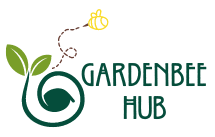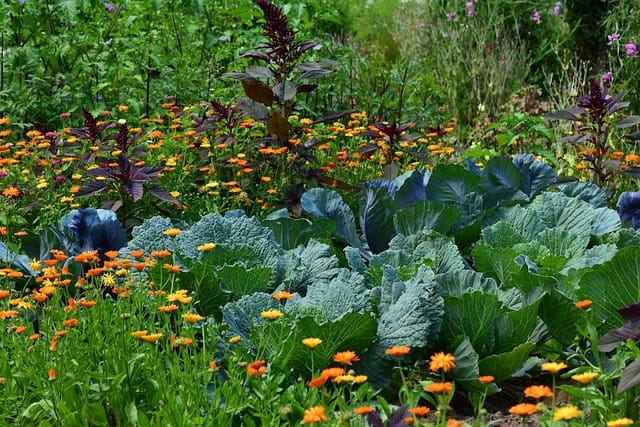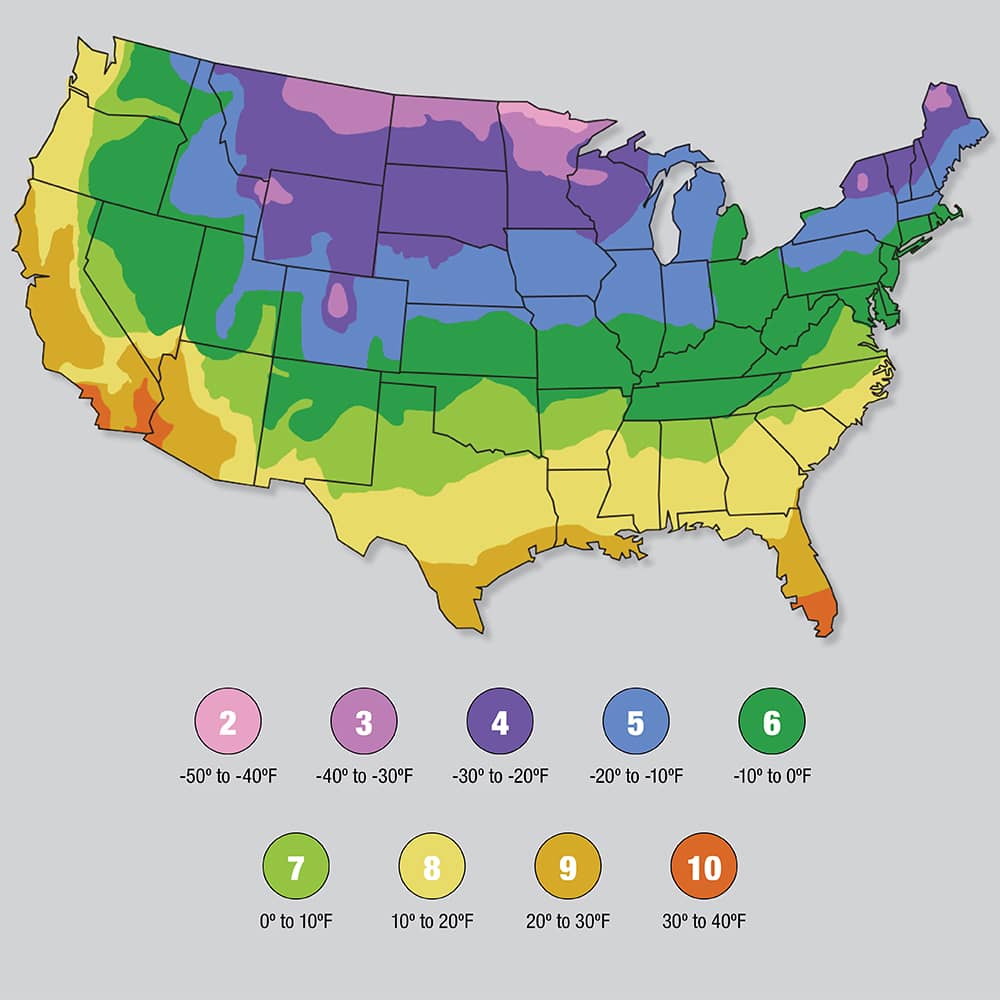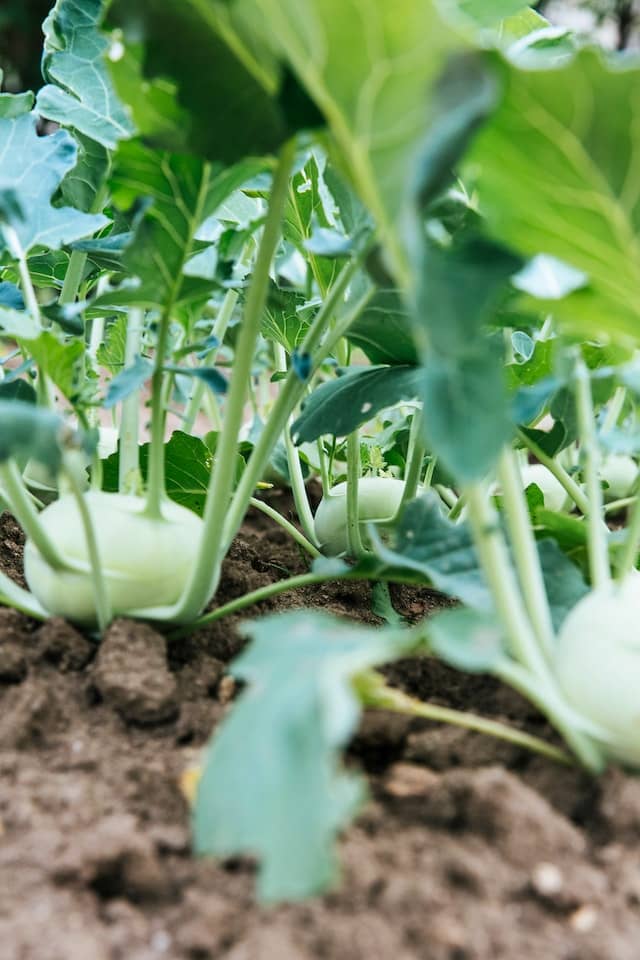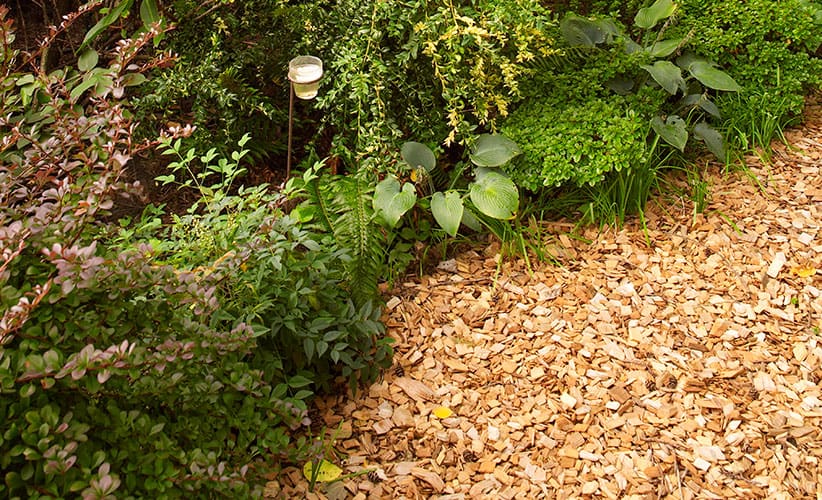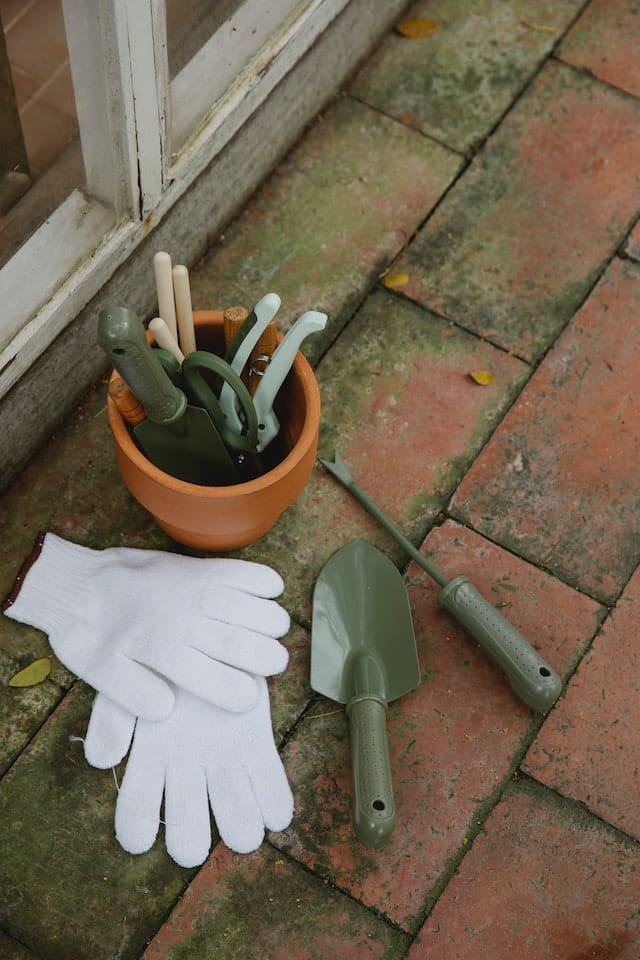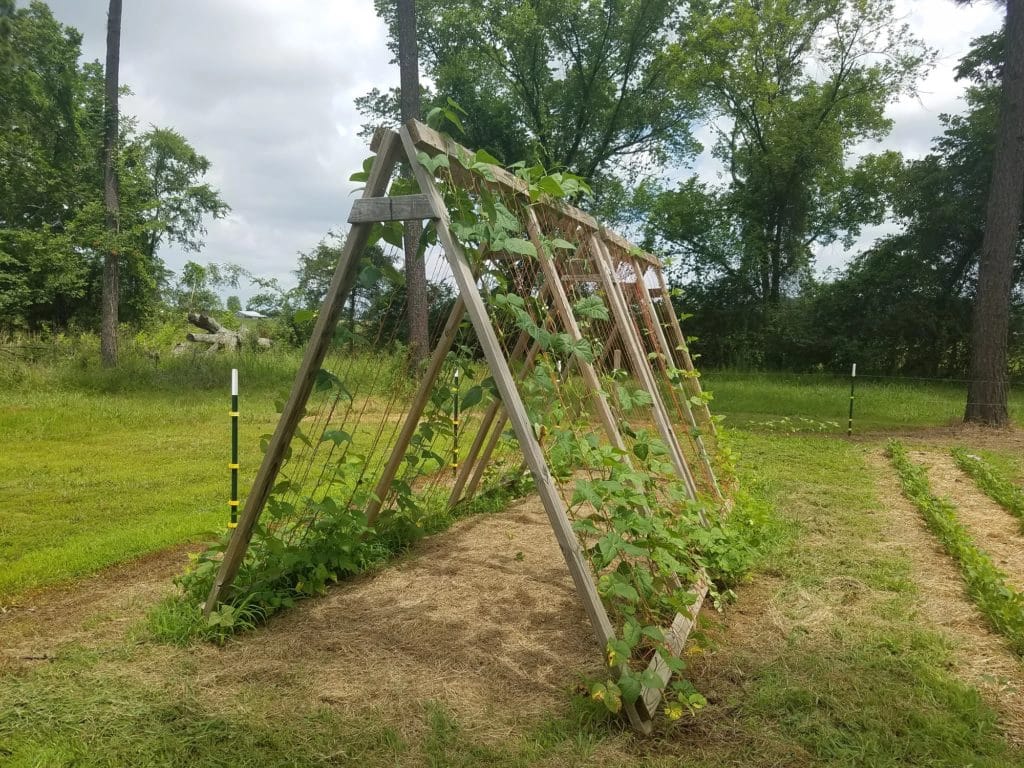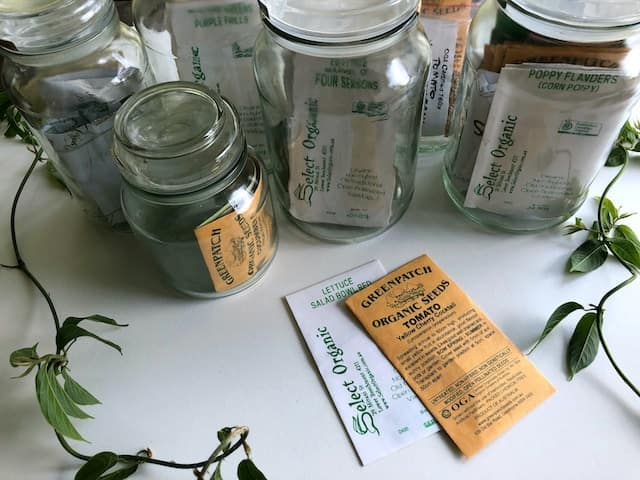Crop rotation is a gardening practice that involves rotating the types of crops grown in a particular area of the garden from year to year (i.e planting different crops in the same area of soil in successive years). This is done to improve soil health, reduce pest and disease problems, and increase crop yields.
Crop Rotation
Why Crop Rotation is Important?
There are several reasons why crop rotation is important for vegetable gardens:
- Improves soil health: Different crops have different nutrient requirements. By rotating crops, you can help to keep your soil healthy by providing a different variety of nutrients, improving soil structure, water retention, and fertility. For example, corn is a heavy feeder, so it can deplete the soil of nitrogen. By rotating corn with a nitrogen-fixing crop, such as beans, you can help to replenish the nitrogen in the soil.
- Reduces pest and disease problems: Pests and diseases often attack the same crops year after year. By rotating crops, you can help to break the life cycle of these pests and diseases. This can help to reduce the amount of pesticides and fungicides that you need to use in your garden.For example, if you plant tomatoes in the same spot every year, you are more likely to have problems with tomato hornworms. By rotating tomatoes with a different crop, such as beans, you can help to reduce the number of tomato hornworms in your garden.
- Increases crop yields: Crop rotation can help to increase crop yields by improving soil health and reducing pest and disease problems. For example, a study by the University of California found that crop rotation increased tomato yields by 20%.
How to rotate crops
There are a few things to keep in mind when rotating crops:
- Group crops by plant family: The first step is to group your crops by plant family. This will help you to identify crops that have similar nutrient requirements and pest and disease problems.
- Rotate crops within the same family every 3-4 years: Once you have grouped your crops, you need to rotate them within the same family every 3-4 years. This will help to prevent the buildup of pests and diseases.
- Consider the size of your garden: If you have a small garden, you may not be able to rotate crops within the same family every 3-4 years. In this case, you can rotate crops between different families every year.
- Rotate crops within the same bed: If you don’t have enough space to rotate crops between different beds, you can still rotate crops within the same bed. Simply divide the bed into four sections and rotate the crops within each section each year.
- Rotate crops every three to four years: This will give the soil enough time to recover from the nutrient demands of the previous crop.
- Use a crop rotation chart: There are many crop rotation charts available online and in gardening books. These charts can help you to plan your crop rotations and ensure that you are rotating crops effectively.
Popular crop rotation plans
Here are some popular crop rotation plans for vegetable gardens:
- The Three-Year Rotation Plan: This plan is a good option for small gardens. In this plan, you rotate crops between three different beds each year (credit)
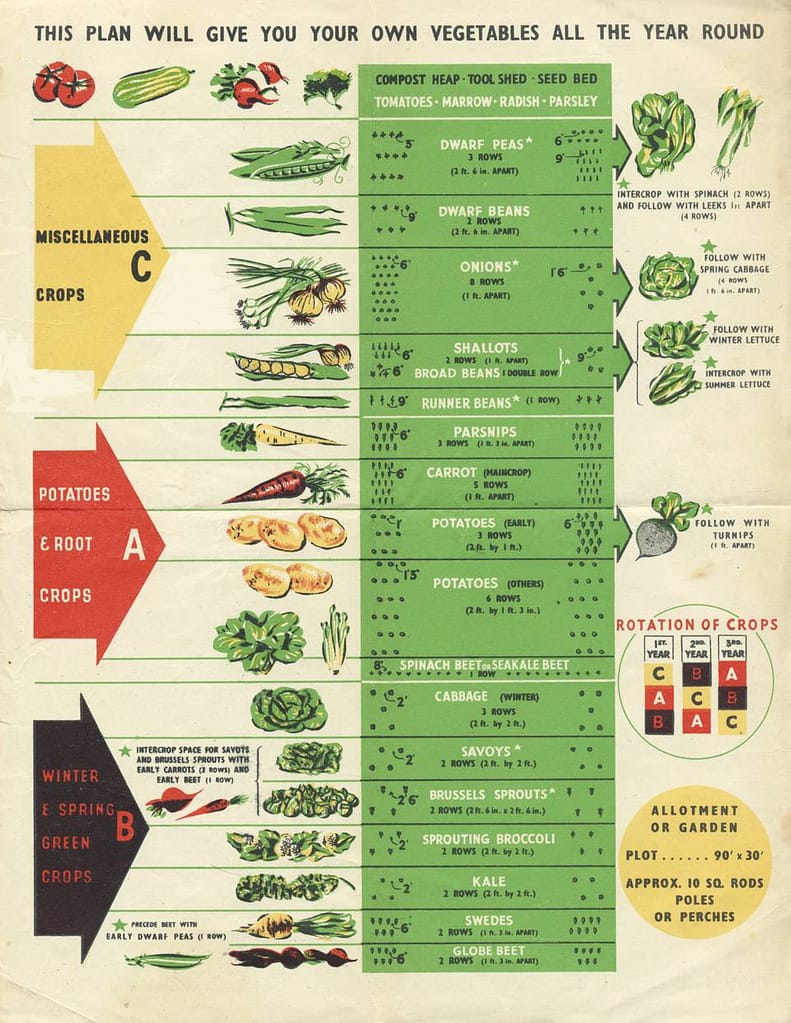
- The Four-Year Rotation Plan: This plan is a good option for medium-sized gardens. In this plan, you rotate crops between four different beds each year (credit).
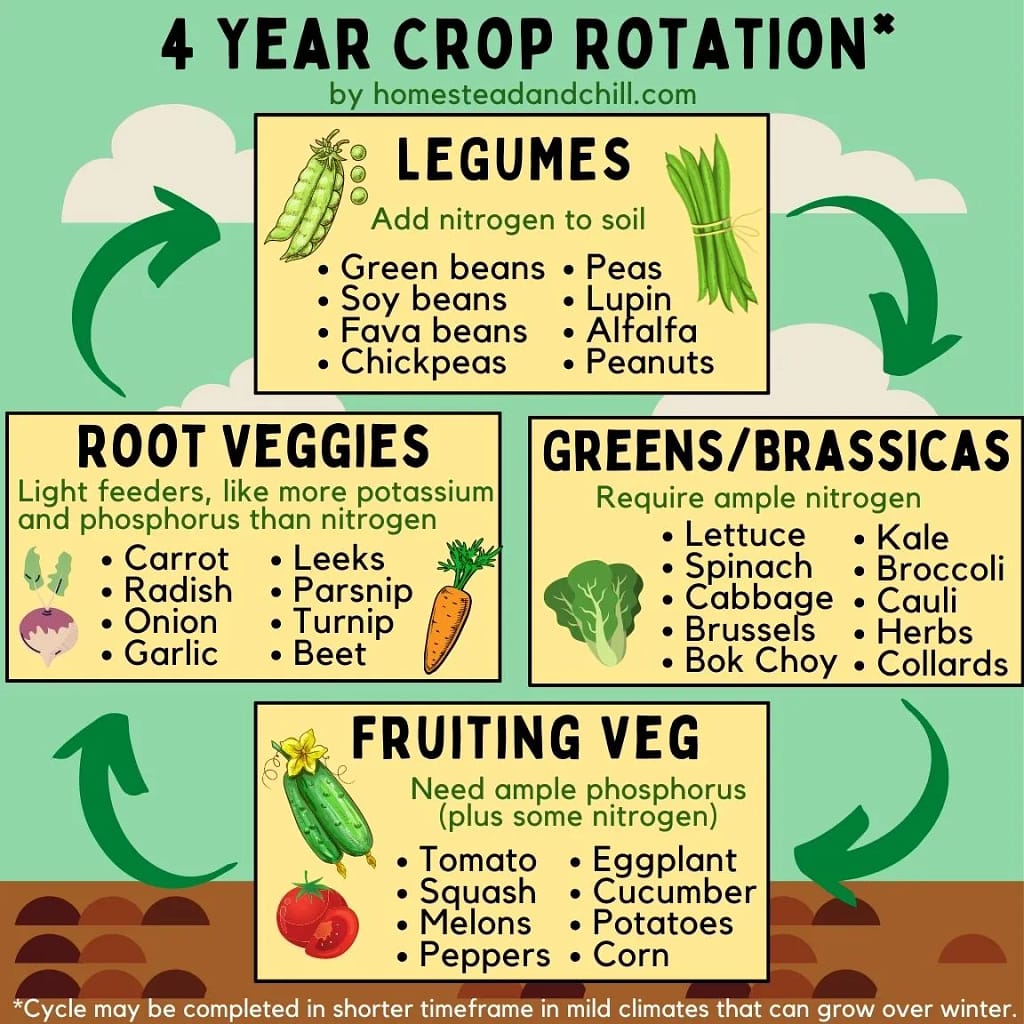
Tips for Crop Rotation
- Keep a garden journal to track where you plant each crop. This will help you to avoid planting the same crop in the same spot too often.
- Use cover crops: Cover crops are plants that are grown between vegetable crops. Cover crops help to improve soil health, suppress weeds, and attract beneficial insects.
- Fertilize your soil: Crop rotation can help to improve soil health, but it is not a substitute for fertilizer. Be sure to fertilize your soil according to the recommendations of your local extension office.
- Water your crops regularly. Watering your crops regularly will help to keep the soil healthy and prevent pests and diseases.
- Inspect your crops regularly for pests and diseases. Inspect your crops regularly for pests and diseases. If you find any problems, take steps to control them immediately.
- Practice integrated pest management to control pests and diseases without using harmful chemicals.
Crop rotation is an important gardening practice that can help to improve soil health, reduce pest and disease problems, and increase crop yields. By following the tips in this article, you can implement crop rotation in your vegetable garden and enjoy the benefits for years to come.
